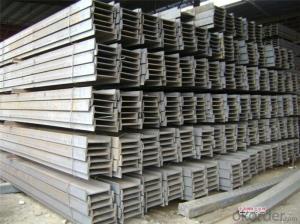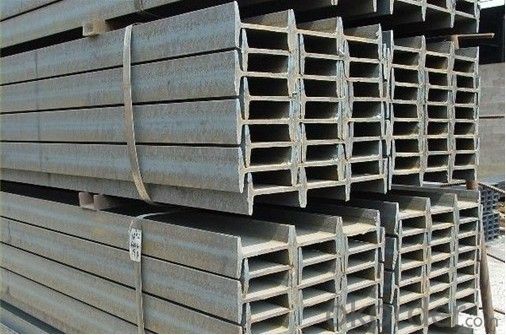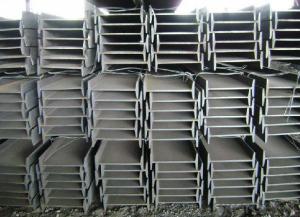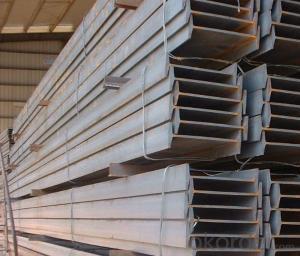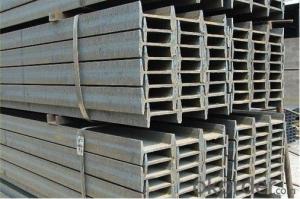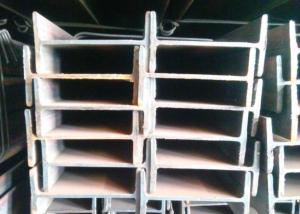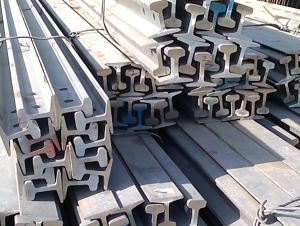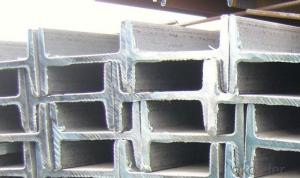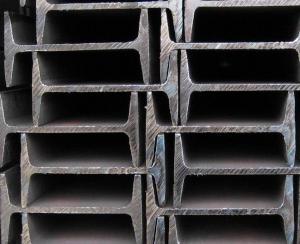Hot Rolled IPE and IPEAA Beams in Q235B Grade with Good Price
- Loading Port:
- Tianjin
- Payment Terms:
- TT or LC
- Min Order Qty:
- 25 m.t.
- Supply Capability:
- 10000 m.t./month
OKorder Service Pledge
OKorder Financial Service
You Might Also Like
Product Applications:
Hot Rolled Steel I-Beams are ideal for structural applications and are widely used in the construction of buildings and bridges, and the manufacturing, petrochemical, and transportation industries.
Product Advantages:
OKorder's Steel I-Beams are durable, strong, and resist corrosion.
Main Product Features:
· Premium quality
· Prompt delivery & seaworthy packing (30 days after receiving deposit)
· Corrosion resistance
· Can be recycled and reused
· Mill test certification
· Professional Service
· Competitive pricing
Product Specifications:
Manufacture: Hot rolled
Grade: Q195 – 235
Certificates: ISO, SGS, BV, CIQ
Length: 6m – 12m, as per customer request
Packaging: Export packing, nude packing, bundled
Chinese Standard (H*W*T) | Weight (Kg/m) | 6m (pcs/ton) | Light I (H*W*T) | Weight (Kg/m) | 6m (pcs/ton) | Light II (H*W*T) | Weight (Kg/m) | 6M |
100*68*4.5 | 11.261 | 14.8 | 100*66*4.3 | 10.13 | 16.4 | 100*64*4 | 8.45 | 19.7 |
120*74*5.0 | 13.987 | 11.9 | 120*72*4.8 | 12.59 | 13.2 | 120*70*4.5 | 10.49 | 15.8 |
140*80*5.5 | 16.89 | 9.8 | 140*78*5.3 | 15.2 | 10.9 | 140*76*5 | 12.67 | 13.1 |
160*88*6 | 20.513 | 8.1 | 160*86*5.8 | 18.46 | 9 | 160*84*5.5 | 15.38 | 10.8 |
180*94*6.5 | 24.143 | 6.9 | 180*92*6.3 | 21.73 | 7.6 | 180*90*6 | 18.11 | 9.2 |
200*100*7 | 27.929 | 5.9 | 200*98*6.8 | 25.14 | 6.6 | 200*96*6.5 | 20.95 | 7.9 |
220*110*7.5 | 33.07 | 5 | 220*108*7.3 | 29.76 | 5.6 | 220*106*7 | 24.8 | 6.7 |
250*116*8 | 38.105 | 4.3 | 250*114*7.8 | 34.29 | 4.8 | 250*112*7.5 | 28.58 | 5.8 |
280*122*8.5 | 43.492 | 3.8 | 280*120*8.2 | 39.14 | 4.2 | 280*120*8 | 36.97 | 4.5 |
300*126*9 | 48.084 | 3.4 | 300*124*9.2 | 43.28 | 3.8 | 300*124*8.5 | 40.87 | 4 |
320*130*9.5 | 52.717 | 3.1 | 320*127*9.2 | 48.5 | 3.4 | |||
360*136*10 | 60.037 | 2.7 | 360*132*9.5 | 55.23 | 3 |
FAQ:
Q1: Why buy Materials & Equipment from OKorder.com?
A1: All products offered byOKorder.com are carefully selected from China's most reliable manufacturing enterprises. Through its ISO certifications, OKorder.com adheres to the highest standards and a commitment to supply chain safety and customer satisfaction.
Q2: What makes stainless steel stainless?
A2: Stainless steel must contain at least 10.5 % chromium. It is this element that reacts with the oxygen in the air to form a complex chrome-oxide surface layer that is invisible but strong enough to prevent further oxygen from "staining" (rusting) the surface. Higher levels of chromium and the addition of other alloying elements such as nickel and molybdenum enhance this surface layer and improve the corrosion resistance of the stainless material.
Q3: Can stainless steel rust?
A3: Stainless does not "rust" as you think of regular steel rusting with a red oxide on the surface that flakes off. If you see red rust it is probably due to some iron particles that have contaminated the surface of the stainless steel and it is these iron particles that are rusting. Look at the source of the rusting and see if you can remove it from the surface.
Images:
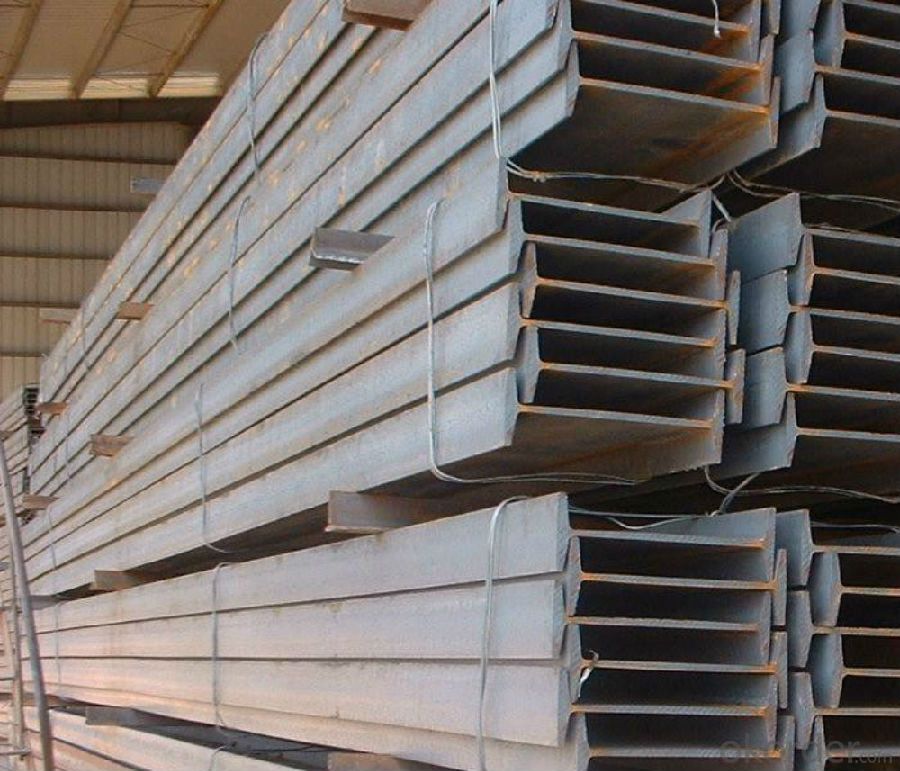
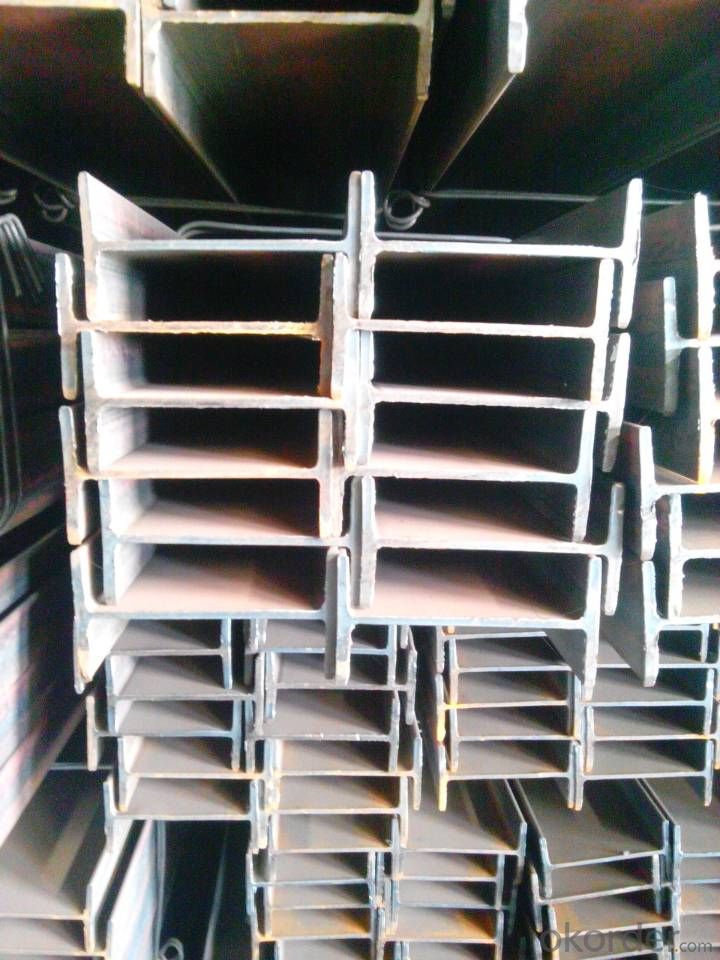
- Q: Are there any limitations or restrictions on the use of steel I-beams?
- Yes, there are certain limitations and restrictions on the use of steel I-beams. These limitations are primarily related to the structural capacity, design considerations, and safety requirements. Firstly, the size and shape of steel I-beams are limited by manufacturing processes and industry standards. I-beams come in various sizes and dimensions, and their selection depends on the load-bearing requirements of the structure. Using an I-beam that does not meet the required specifications can compromise the structural integrity and put the safety of the building at risk. Additionally, steel I-beams have limitations in terms of their span or length. Longer spans require larger and stronger I-beams to ensure sufficient load-bearing capacity. It is essential to consult structural engineers and adhere to building codes and standards to determine the appropriate size and spacing of I-beams for a specific application. Moreover, the use of steel I-beams may be limited in certain environments. Steel can corrode when exposed to moisture or chemicals, which can weaken the beams over time. In such cases, appropriate protective coatings or corrosion-resistant materials should be used to ensure the durability and longevity of the I-beams. Lastly, there may be restrictions on the use of steel I-beams in certain building codes or regulations. These codes often dictate the minimum requirements for structural elements, fire resistance, seismic performance, and other safety considerations. It is crucial to comply with these regulations to ensure the structural stability and safety of the building. In summary, while steel I-beams offer excellent load-bearing capacity and versatility, their use is subject to limitations and restrictions. These include considerations related to size, span, environmental conditions, and compliance with building codes and safety regulations. Consulting with structural engineers and adhering to industry standards is essential to ensure the proper and safe utilization of steel I-beams in construction projects.
- Q: Are steel I-beams resistant to pests, such as termites?
- Steel I-beams have a high resistance to pests, including termites. Unlike wood, which can be infested by termites, steel does not offer pests a food source or a place to live. This makes steel I-beams an ideal option for building in areas where termites are common. Furthermore, steel is also resistant to other pests like rodents, ants, and beetles, which makes it more durable and long-lasting compared to other materials.
- Q: Can steel I-beams be used in railway bridges?
- Indeed, railway bridges can incorporate steel I-beams. The utilization of steel I-beams in bridge construction is widespread owing to their remarkable strength-to-weight ratio, durability, and adaptability. These beams possess the capacity to bear substantial loads and can be tailored to cover expansive spans, rendering them well-suited for railway bridges. By employing steel I-beams in railway bridges, one can ensure the integrity and safety of the structure, all while enabling efficient and economical construction. Furthermore, the fabrication and installation of steel I-beams are straightforward, rendering them a favored option for railway bridge endeavors.
- Q: What are the environmental implications of using steel I-beams in construction?
- The use of steel I-beams in construction has both positive and negative environmental implications. On the positive side, steel is a highly durable and strong material, which allows for the construction of long-lasting and sturdy buildings. Moreover, steel is recyclable, reducing the need for new production and minimizing waste. However, the production of steel I-beams requires a significant amount of energy and emits greenhouse gases, contributing to climate change. Additionally, the extraction of iron ore and the mining of other materials used in steel production can have adverse environmental impacts, including habitat destruction and water pollution. Therefore, while steel I-beams offer structural advantages, it is crucial to consider their environmental footprint and explore sustainable alternatives whenever possible.
- Q: What does welded I-beam I400*1200*12*20 mean?
- The width of 400mm, height 1200mm, web thickness 12mm, the thickness of flange 20mm.Generally expressed as: height H * width B * web thickness t1 * wing plate thickness T2
- Q: How do steel I-beams perform in areas with high UV exposure?
- Steel I-beams perform well in areas with high UV exposure due to their protective coatings. The coatings, such as galvanized or painted finishes, are specifically designed to resist the harmful effects of UV rays. These coatings act as a barrier, preventing the steel from direct exposure to the sun's ultraviolet radiation. UV exposure can cause degradation and discoloration of materials over time, but steel I-beams are highly resistant to these effects. The protective coatings not only shield the steel from UV rays but also provide additional corrosion resistance, extending the lifespan of the beams. However, it is important to note that over an extended period, even the most durable coatings may experience some level of degradation. Therefore, regular inspections and maintenance are necessary to ensure the continued performance of steel I-beams in areas with high UV exposure. This may involve periodic reapplication of protective coatings or other maintenance procedures recommended by the manufacturer.
- Q: Can steel I-beams be used in historical building restoration?
- Yes, steel I-beams can be used in historical building restoration. They provide structural support and reinforcement, allowing for the preservation and restoration of historical buildings while meeting modern safety standards.
- Q: How do steel I-beams perform in terms of impact resistance?
- Steel I-beams are known for their exceptional impact resistance. The unique design of the I-beam, with its flanges and web, provides a high level of strength and rigidity, making it highly effective in withstanding impact forces. When subjected to an impact, the I-beam distributes the force along its length, which helps to prevent deformation or failure. The structural properties of steel, such as its high tensile strength and toughness, further enhance its impact resistance. Steel is one of the strongest construction materials available, allowing I-beams to withstand heavy loads and absorb the energy of impacts without significant deformation or damage. Moreover, steel I-beams are often used in applications where impact resistance is crucial, such as in building structures, bridges, and industrial facilities. These beams can effectively resist dynamic loads, including sudden impacts, collisions, or even natural disasters like earthquakes or strong winds. It is worth noting that the specific impact resistance of steel I-beams can vary depending on factors such as the size and shape of the beam, the grade and quality of the steel used, and the design and construction techniques employed. Therefore, it is essential to choose the appropriate type of I-beam and ensure proper engineering and installation practices to maximize its impact resistance.
- Q: How do I weld 3 steel plates into I-beam?
- Thicker board, welding process should pay attention to preheat before welding, welding cold, welding on both sides of the weld must be done before cleaning. If the beam is longer, more than one welder can be arranged at the same time.
- Q: How do you determine the appropriate size and shape of a steel I-beam for a specific application?
- Several key factors need to be considered when determining the appropriate size and shape of a steel I-beam for a specific application. The first step is to understand the load requirements, including the magnitude and distribution of the load that the I-beam will bear. Engineers typically consult structural design codes and standards, such as the AISC Manual, to determine the appropriate size. These codes provide guidelines and equations to calculate the required section modulus and moment of inertia for a given load. The shape of the I-beam is also crucial in meeting the application's requirements. Different shapes, such as W-shapes, S-shapes, and HP-shapes, offer different properties in terms of strength, stiffness, and resistance to bending and deflection. Aside from load requirements, other factors to consider include the available space for installation, the type of support structure, and the desired aesthetic appearance. It is highly recommended to consult with a structural engineer or a professional familiar with steel beam design to ensure the selection of the appropriate size and shape for the specific application.
Send your message to us
Hot Rolled IPE and IPEAA Beams in Q235B Grade with Good Price
- Loading Port:
- Tianjin
- Payment Terms:
- TT or LC
- Min Order Qty:
- 25 m.t.
- Supply Capability:
- 10000 m.t./month
OKorder Service Pledge
OKorder Financial Service
Similar products
Hot products
Hot Searches
Related keywords
